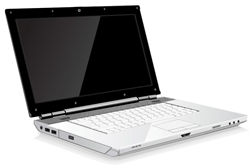 Office computers are key resources in your company. Yet choosing a business computer can be tricky given the overwhelming number of options.
Office computers are key resources in your company. Yet choosing a business computer can be tricky given the overwhelming number of options.
The trick is to focus on what you want to do with it and prepare a clear set of IT requirements before looking at specific business PC models.
The most common type of business computer is a PC (personal computer). These are made by different companies but use the same underlying technology. They can run a wide range of programs and are the type of computer most people are familiar with.
The main alternative to a business PC is an Apple Mac. Although traditionally used in creative industries, they have gradually become more popular. However, as they’re significantly more expensive than comparable PCs, business take-up has been limited.
Business computer are available as:
Laptops and ultrabook can do everything a desktop can with the added benefit of portability. Because of this, many companies issue them as standard – especially small businesses.
Although ultrabooks tend to be more expensive than standard laptops, they are growing in popularity. Many businesses feel they recoup the extra expense swiftly through increased productivity.
The other significant development in business computers is the emergence of the tablet computer. Although lacking the power of a full business computer, these touch screen devices are often small enough to take anywhere, providing an excellent option for mobile computing.
In fact, tablet touchscreen technology is having an influence on PC and software design too. Many new computers – laptops and desktops – now have touchscreen displays and Microsoft 8 (the latest version of the Windows operating system) has been optimised for touch screen technologies.
The specification of a business computer can run to several pages, but these features have the biggest influence on performance:
Computer accessories - also known as peripherals - add additional functions to your computers. Some accessories come with your computer as standard - such as keyboards and monitors - and others can be added as required. If you have employees who spend long periods of time using computers, it is worth reviewing whether the computer accessories you have are up to the job, comply with relevant health and safety rules and whether there are other accessories that would be beneficial.
The key features listed above have the largest influence on the price of office computers, but ultimately your IT requirements will determine what you need.
Basic PCs start at £250, but tend to date quickly and need replacing sooner. Mid-range PCs are better for general business tasks like word processing and accessing the internet. They cost £350 – £500 and should last about three years.
High-end PCs with fast processors start at £600. They can handle intensive tasks like video editing and large databases. These office computers may also be better suited to system upgrades.
These prices are for desktop computers. Expect to pay a little more for the same specification as a standard laptop, or significantly more for an ultrabook.
Popular content about business computers: